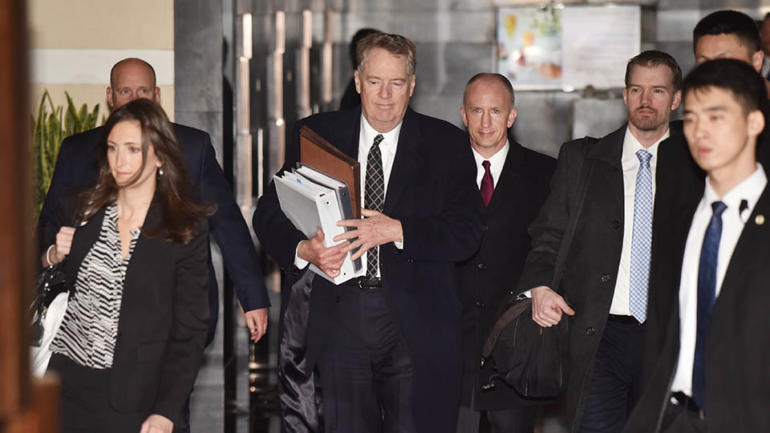China and the U.S. resume ministerial-level talks in Beijing on Feb 14. They’re trying to negotiate an end to a trade war that could get even more punitive if the two sides cannot resolve their differences.
CGTN’s Owen Fairclough looks back on what brought the world’s two biggest economies to this point.
It began as a battle with all major trade partners of the U.S. early last year.
“I’m defending America’s national security by placing tariffs on foreign imports of steel and aluminum,” Trump told a gathering of steelworkers at the White House.
“We will have a 25 percent tariff on foreign steel and a 10 percent tariff on foreign aluminum, when the product comes across our borders.”
But where those blanket duties were rolled back for some partners such as South Korea, Canada and Mexico, Trump doubled down on China for a litany of long-standing complaints.
“We will combat the counterfeiting and piracy that destroys American jobs. We will enforce the rules of fair and reciprocal trade that form the foundation of responsible commerce.”
Duties on $50 billion worth of Chinese imports to the U.S were increased to $250 billion – just over half of last year’s total.
China retaliated with tariffs that doubled the pain for U.S. automakers – first hit by higher duties for parts they buy from China and then on the finished products they export back to China.
But while rejecting U.S. claims of unfair trade practices, President Xi Jinping has been less combative than Trump.
“A trade war should be rejected because there will be no winner,” he told the BRICS forum. “Economic hegemony is even more objectionable because it will undermine the collective interest of the international community.”
Amid warnings their battle threatened the global economy, the two leaders called a ceasefire over dinner at the G20 summit in Argentina last December.
Trade delegations have since shuttled back and forth between Beijing and Washington as Trump threatens to ramp up the level of duties by March 1st if China doesn’t change its trade practices – although Trump appears to be flexible on the deadline if a deal looks likely.
But Trump’s tariff war hasn’t helped a key U.S. objective: reducing China’s trade surplus because he thinks it harms U.S.. It’s the highest since 2006.
Li Kuiwen, China’s customs administration spokesperson, told a news conference in January: “The trade surplus hit $323.32 billion, an increase of 17.2 percent year-on-year.”
And other countries are benefiting.
China cut U.S. soybean imports as part of its retaliation before agreeing to buy them again – though not before Argentina took the opportunity to sell China a bumper harvest.
Yan Wang discusses the current round of US-China trade talks
CGTN’s Rachelle Akuffo spoke with Yan Wang, chief emerging markets and China strategist at Alpine Macro. about the propects of U.S.-China trade talks ahead of a March 1 U.S. tariffs deadline.
 CGTN America
CGTN America
 US Trade Representative Robert Lighthizer (C) and Deputy Trade Representative Jeffrey Gerrish (behind Lighthizer) leave a hotel with members of a negotiation team in Beijing on February 13, 2019. – US Treasury Secretary Steven Mnuchin will be joined by Lighthizer as well as David Malpass, President Donald Trump’s nominee to lead the World Bank, in negotiations with China set for February 14 and 15. (Photo by GREG BAKER / AFP)
US Trade Representative Robert Lighthizer (C) and Deputy Trade Representative Jeffrey Gerrish (behind Lighthizer) leave a hotel with members of a negotiation team in Beijing on February 13, 2019. – US Treasury Secretary Steven Mnuchin will be joined by Lighthizer as well as David Malpass, President Donald Trump’s nominee to lead the World Bank, in negotiations with China set for February 14 and 15. (Photo by GREG BAKER / AFP)
